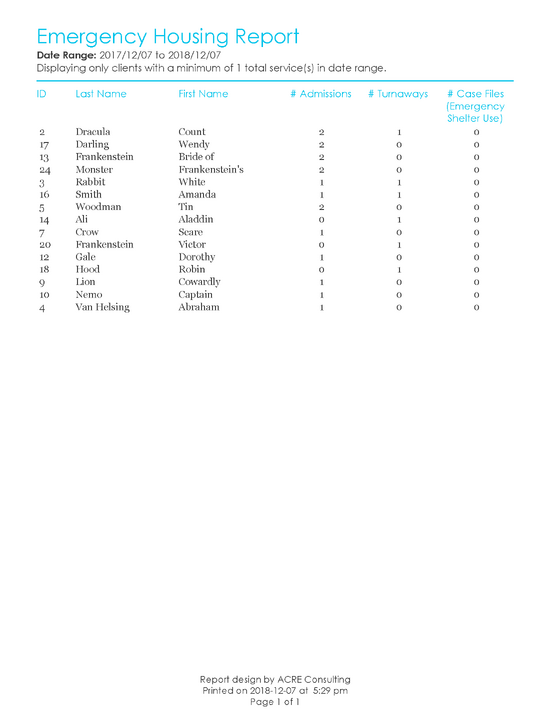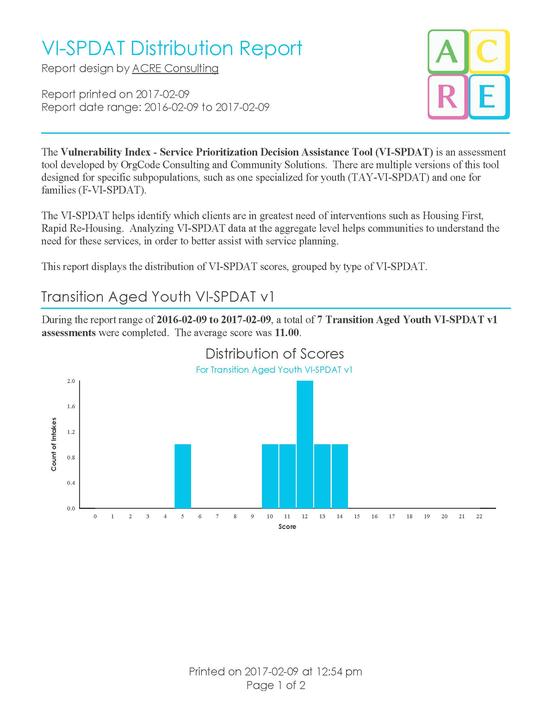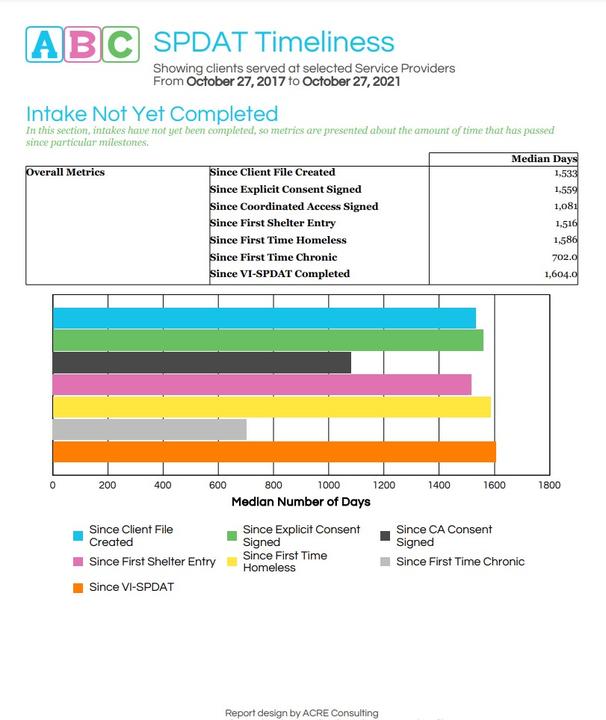
This 21+ page report helps communities to assess whether clients are being assessed on time. It measures when the SPDAT was completed for clients, relative to the milestones of: client file creation, providing explicit and CA consent, first shelter book-in, first VI-SPDAT, and first becoming homeless and chronically homeless. The report shows clients served by specific service providers within a specific date range.
This 21+ page report helps communities to assess whether clients are being assessed on time. It measures when the SPDAT was completed for clients, relative to the milestones of: client file creation, …
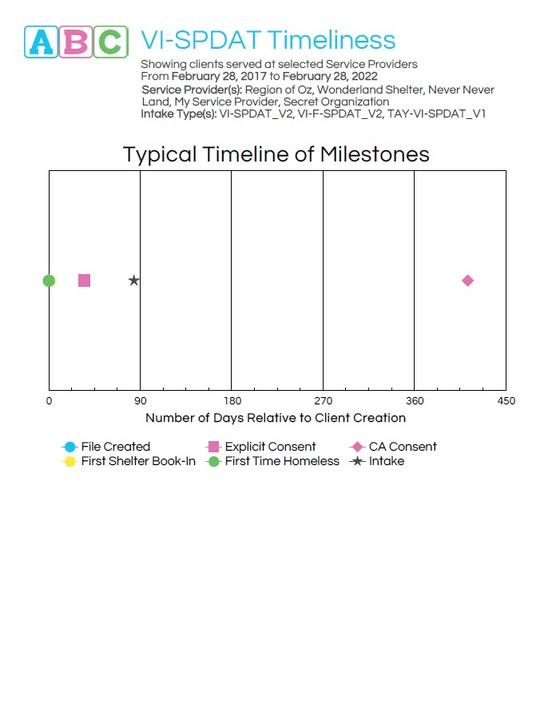
This 18+ page report helps communities to assess whether clients are being assessed on time. It measures when the VI-SPDAT was completed for clients, relative to the milestones of: client file creation, providing explicit consent, providing coordinated access consent, first shelter book-in, and first becoming homeless. The report shows clients served by specific service providers within a specific date range.
This 18+ page report helps communities to assess whether clients are being assessed on time. It measures when the VI-SPDAT was completed for clients, relative to the milestones of: client file creatio…

This report was created by ACRE Consulting to help communities understand the scope of their homeless population, in real time. This report measures the following three indicators:how many clients have active and valid consenthow many clients are actively receiving serviceshow many clients are known to be homeless A combination of these three measures can be used to determine how many people are known to be active...
This report was created by ACRE Consulting to help communities understand the scope of their homeless population, in real time. This report measures the following three indicators:how many clients hav…
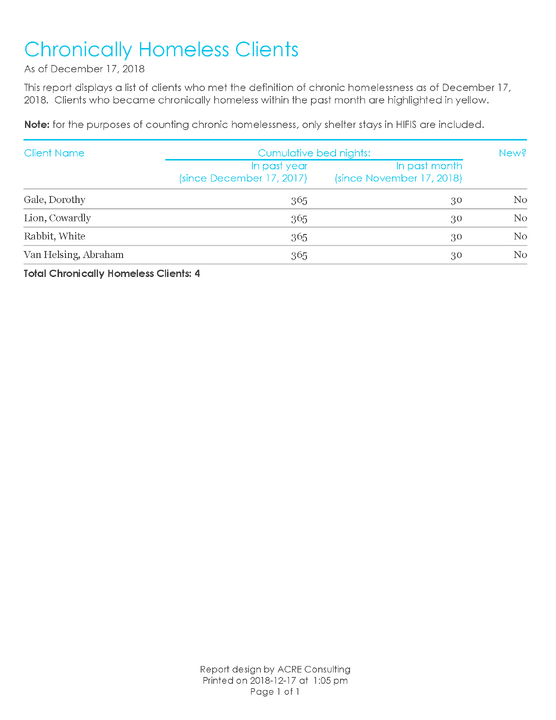
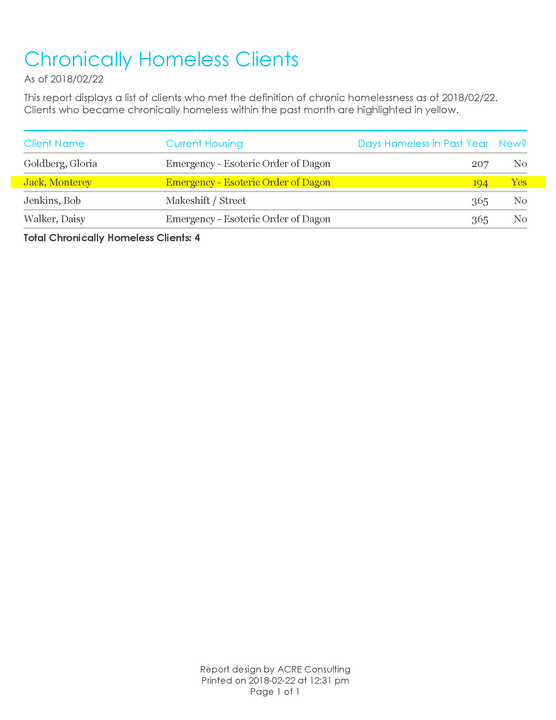
This report displays a list of all clients who are chronically homeless at the time that the report is generated, along with their total length of time homeless in the past year, and their current housing situation. Clients who are newly chronically homeless (became chronically homeless in the past year) are highlighted in yellow. Note that this report hard-codes a definition of homelessness; only particular housing types are included and it does not utilize the default rules nor does it look up a housing continuum.
This report displays a list of all clients who are chronically homeless at the time that the report is generated, along with their total length of time homeless in the past year, and their current hou…
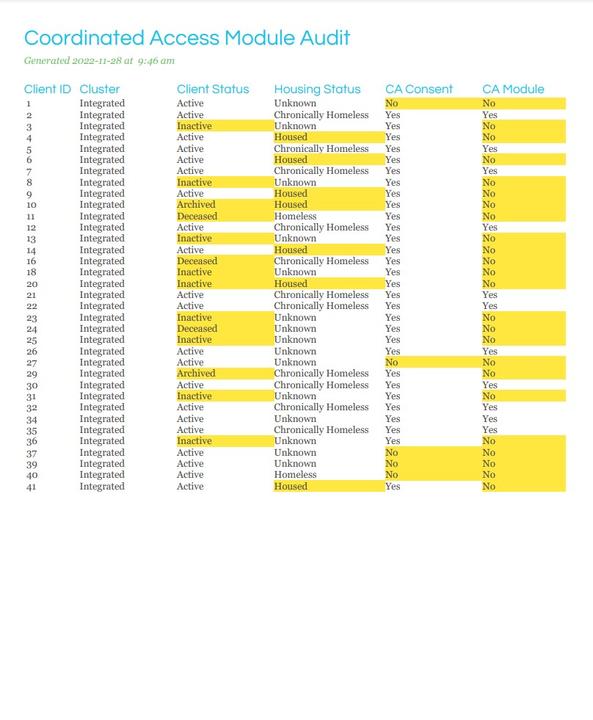
This simple report was comissioned by Lambton County to identify which clients were missing from their Coordinated Access module. It's intended to be exported to Excel and then filtered as needed, and just shows an anonymous list of clients along with their cluster, client status, housing status, Coordinated Access consent status, and whether or not they appear within the Coordinated Access module. Clients who would not appear are highlighted along with the reason they are not appearing.
This simple report was comissioned by Lambton County to identify which clients were missing from their Coordinated Access module. It's intended to be exported to Excel and then filtered as needed, and…

This report, commissioned by the City of Ottawa, aggregates data from the first shelter stay of clients in HIFIS 4. In other words, for each client, it looks up to see what was their first date of shelter admission, out of all the stays that have been recorded in HIFIS. Then it summarizes the total unique number of new shelter clients by month and by year, allowing you to track long-term shelter inflow data. There is no date parameters for this report; instead it automatically displays data for up to the past 5 years (if there is data going back that far).
This report, commissioned by the City of Ottawa, aggregates data from the first shelter stay of clients in HIFIS 4. In other words, for each client, it looks up to see what was their first date of she…
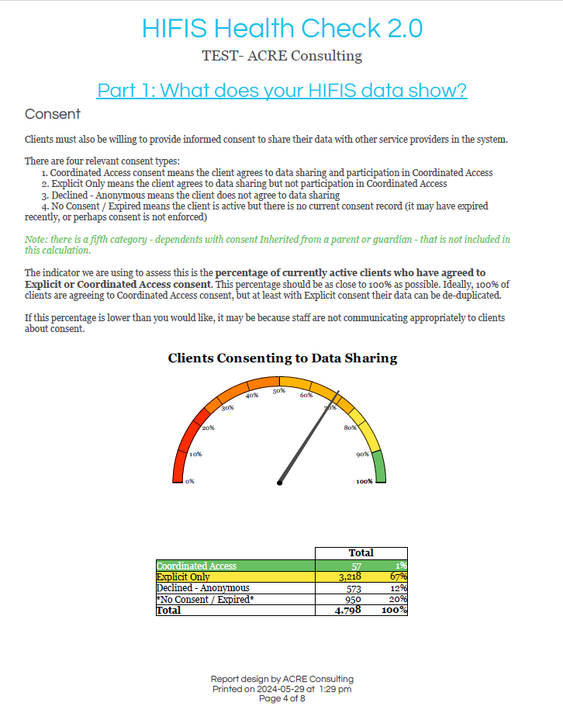
This newly updated HIFIS Health Check pulls data from HIFIS along 6 metrics:
Cluster integration
Consent
Potential duplicates
Unknown housing status
User logins
Inactive clients
Together, these metrics should serve to provide a high-level overview of how well your HIFIS data is able to support your Coordinated Access system and meet Reaching Home directives.
This newly updated HIFIS Health Check pulls data from HIFIS along 6 metrics:
Cluster integration
Consent
Potential duplicates
Unknown housing status
User logins
Inactive clients
Together, these metric…

This report was commissioned by the City of Brantford to act as their prioritization list. It builds on the Coordinated Access module in HIFIS 4.0.59, and includes some additional features. Some of these modifications include: Contributing Factors, trimorbidity, current Case goal and caseworker, Family size, approaching inactivity, and presence on a Waiting List.
This report was commissioned by the City of Brantford to act as their prioritization list. It builds on the Coordinated Access module in HIFIS 4.0.59, and includes some additional features. Some of th…
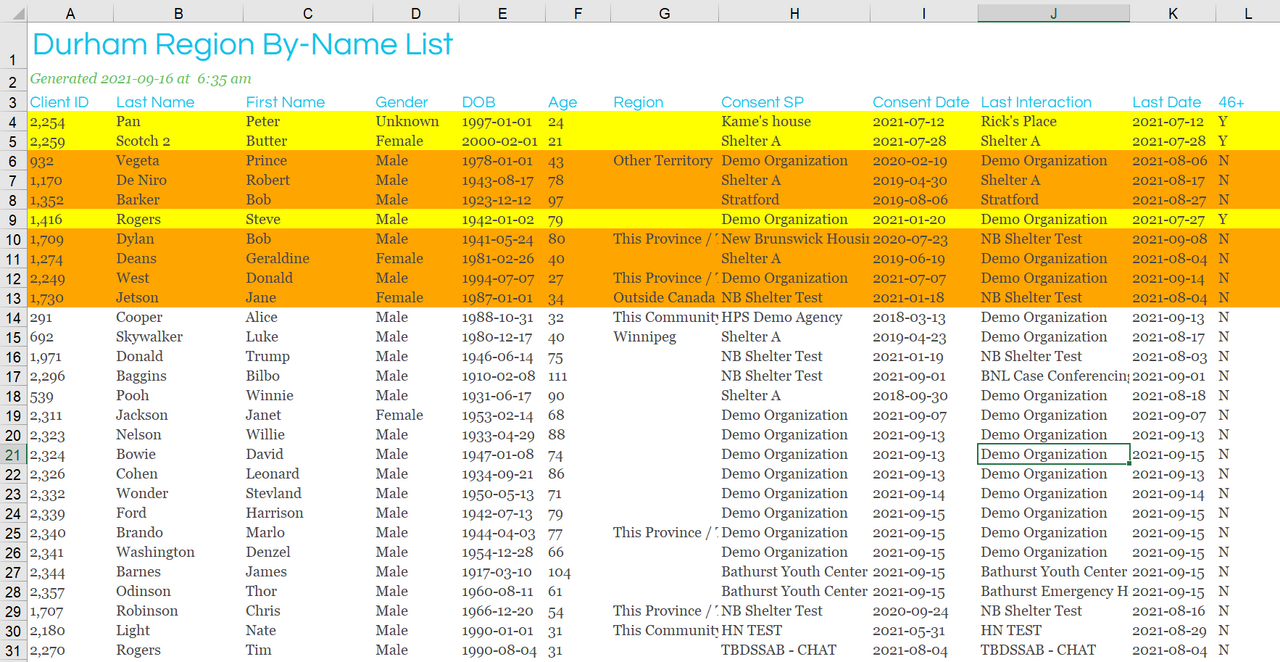
This report was commissioned by the Region of Durham to act as their prioritization list. It builds on the Coordinated Access module in HIFIS 4.0.59, and includes some additional features. Some of these modifications include: date and location consent was signed at, approaching inactivity, date Housing History was updated, trimorbidity, trauma/abuse, family reunification, and a unique prioritization formula.
This report was commissioned by the Region of Durham to act as their prioritization list. It builds on the Coordinated Access module in HIFIS 4.0.59, and includes some additional features. Some of the…
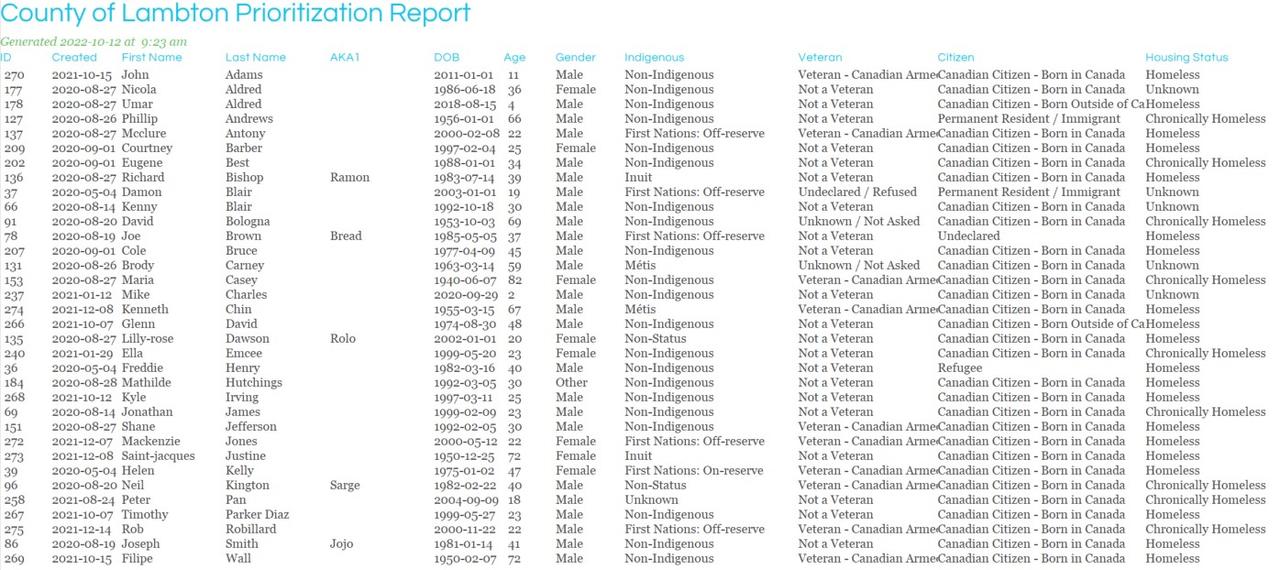
This report was commissioned by the County of Lambton to act as their prioritization list. It builds on the Coordinated Access module in HIFIS 4.0.59, and includes some additional features. Some of these modifications include: bypassing the default calculation of chronicity, pulling out some fields from the VI-SPDAT, and using Reason for Service data to determine institutional discharges.
This report was commissioned by the County of Lambton to act as their prioritization list. It builds on the Coordinated Access module in HIFIS 4.0.59, and includes some additional features. Some of th…
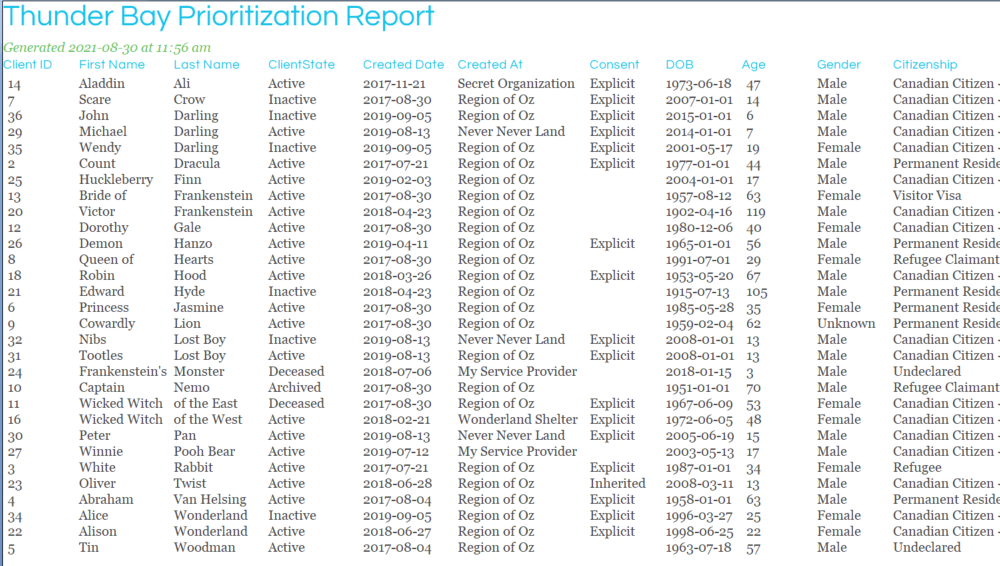
- Contributing Factors,
- Turnaways,
- client creation date,
- most recent service provider interaction,
- consent type, and
- most recent city.

This is Waterloo's prioritization list, which pulls data from a Waiting List called PATHS, and includes the following data: name, household type, household size, gender, age, status (Waiting List Priority), caseworker, VI-SPDAT score, SPDAT score, date added to waiting list, date removed from waiting list, days on waiting list, chronic status, trimorbidity (derived from VI-SPDAT), risk (derived from VI-SPDAT), critical safety (derived from Watch Concern), previous shelter, CHAC (presence on another Waiting List), housing preferences (from Custom Table).
This is Waterloo's prioritization list, which pulls data from a Waiting List called PATHS, and includes the following data: name, household type, household size, gender, age, status (Waiting List Prio…
The dataset pulls data from the VI-SPDAT (Adult) version 2 and organizes it into a single view, listing overall data about the VI-SPDAT (i.e. caseworker, date and time) along with answers to individual questions stored in columns. It also calculates the number of VI-SPDATs the client has completed, and retrieves the trimorbidity score along with other section scores.
The dataset pulls data from the VI-SPDAT (Adult) version 2 and organizes it into a single view, listing overall data about the VI-SPDAT (i.e. caseworker, date and time) along with answers to individua…
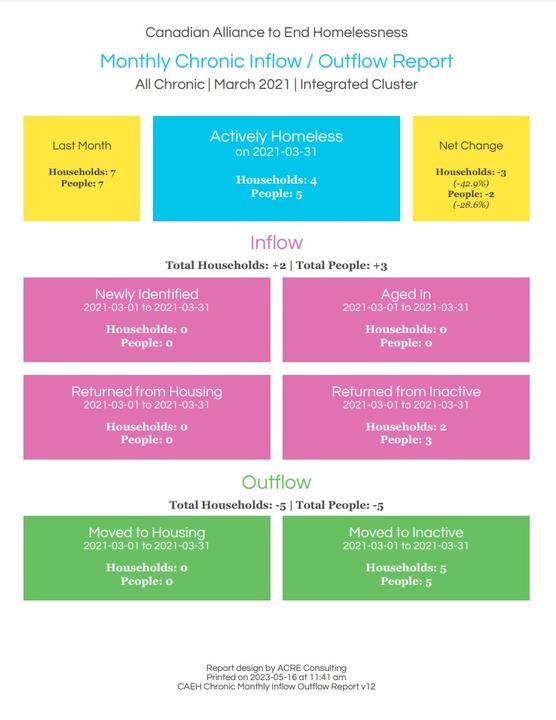
These reports are designed to help communities report on and analyze the monthly changes in their homeless population. There are three versions available: chronic, veteran, and all homeless. These reports display active, aged in, newly identified, returned from inactive, returned from housed, moved to inactive, and moved to housed, all for a single cluster for a specified month.
These reports are designed to help communities report on and analyze the monthly changes in their homeless population. There are three versions available: chronic, veteran, and all homeless. These rep…


